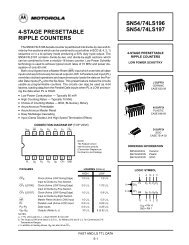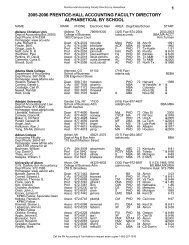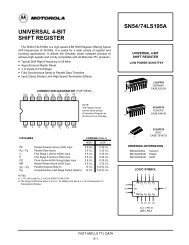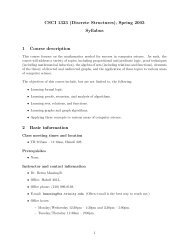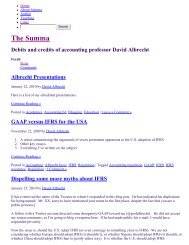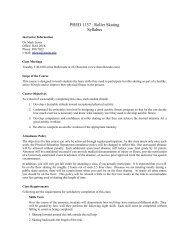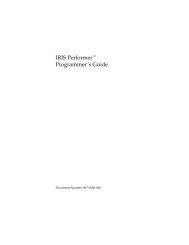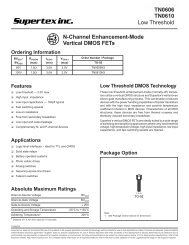A formal description of SYSTEM/360
A formal description of SYSTEM/360
A formal description of SYSTEM/360
- No tags were found...
You also want an ePaper? Increase the reach of your titles
YUMPU automatically turns print PDFs into web optimized ePapers that Google loves.
~register os/s" (line 45), acknowledging its receipt with commandout(line 49), waiting for the next response (line til), which thistime must be status-in (line 52), and loading both status byteand address into the channel registers as an interruption request(line 53). It then dwells at line 56 waiting for a call from the CPU.A multiplexor channel has a slightly more complex sequenceafter line 45. It first uses the device address just received to generatean index to the subchannel storage facilities (line 47). Alleight bits <strong>of</strong> the address are used to generate this index if thezeroth bit is a zero. If not, only bits one, two, and three are used,thus allowing several devices to share a sub-channel, i.e., a storagelocation in T. The stored operational information is then loadedinto the active subchannel facilities, the channel is put into theworking state by setting Bi to 1, and BII/IT (burst mode timer) isreleased from its dwell by setting g2. The device is signalled to proceed(line 49), and the state <strong>of</strong> S: is sensed (line 50) to determinewhich phase <strong>of</strong> operation the device is in.If S: = 0, the device is requesting service <strong>of</strong> the second kindand the program proceeds much as in the case <strong>of</strong> a selector channel.An additional malfunction is recognized in this case if the controlunit overlooks suppress-out and accepts service when BE = 1(line 52). If no malfunction is recognized, an interruption requestis entered on line 53 and receipt <strong>of</strong> the status is acknowledgedon line 55. The earlier remarks concerning line 76 are relevanthere, since the device may still be required to stack the informationin spite <strong>of</strong> the fact that the interruption facilities are now available.The criterion this time is whether the byte just received is terminationstatus stacked at the time <strong>of</strong> generation. The state <strong>of</strong> S:determines this, and so is used to choose between command-out( 17:) and service-out ( U:), allowing the device to clear the statusif Si = 1. As noted before, the need to stack arises because nonterminationstatus information can be displaced from B" withoutentry into a CSW. Finally, the branch to line 59 returns thechannel to idle status through lines 61 and 58.If Si = 1 in line 50, there is an immediate branch to line 59,and the dwell at lines 61 and 62 would await a response on theinterface, just as if the device had never disconnected from thechannel. The device may be at any stage in its operation and it ispossible that it will transmit status information rather than dataat this time. This would, <strong>of</strong> course, lead into the termination sequence,as previously outlined. If data remains to be transferred,the device will transmit or accept its characteristic number <strong>of</strong>bytes and then set U,O to zero, allowing the charmel to return to idle.Certain channel models, when idling, contiuuously scan theirinterfaces for service requests rather than waiting for request-in to rise. This difference is shown by the branch at line 35. Thecontinuous-scan type follows the loop . . , 39, 40, 41, 42, 43,35, 39, . . , skipping the dwell at line 37 and responding (line 43)to the CPU interlock BE, after each non-response from the interface( U; = 0, line 42). The other type, largely described above,FORMAL DESCRIPTION OF <strong>SYSTEM</strong>/<strong>360</strong> 229




